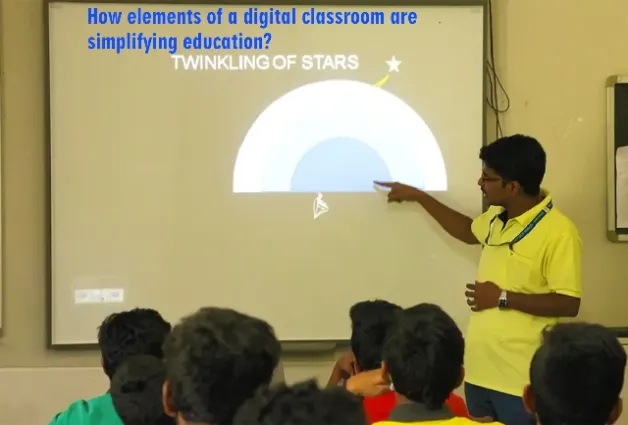A digital classroom uses computers, the internet, and educational software to enhance the learning experience. A digital classroom can be an extension of the traditional classroom. It utilizes technology to enhance creativity, critical thinking, ability to collaborate, and communication effectively. Digital classrooms make it easier to access information resources related to topics being discussed in the class.
Elements of a digital classroom:
1. Data
In a digital classroom, the teaching is much more personalised as compared to traditional teaching methods which do not support recorded learning.
In an e-learning-based classroom, teachers can access data of students from their attendance records to assessment scores with a click. It is difficult to keep a record of everything in a regular classroom without the use of technology where the class teacher has to handle details manually and rely on memory.
2. Efficiency
Teachers teaching in a digital classroom have access to better study material in preloaded repositories including self-explanatory diagrams, 3D animations, worksheets, quizzes, and e-books all designed to make the classroom sessions more engaging and simplify complicated topics. Therefore a digital classroom has better educational efficiency. It is much easier to explain with the help of figures and animated media rather than just relying on textbooks. This promotes interactive learning and efficiency.
3. Feedback
Providing students feedback on their understanding of the topic or course and the performance of tasks is the central objective of active learning. Feedback can be in many forms and can come from fellow students or instructors. It is important to use feedback as the necessary element for a better experience as it helps students to engage with the study material and check their understanding at different points in the learning process. The feedback in a digital classroom is given in real-time and is free-flowing as there is no need to wait for the next day to make the announcement of the result.
4. Self-Paced Learning
Each student learns and understands at a different pace. A digital classroom offers flexibility. In a traditional classroom, teachers focus on a group of students rather than a single student. Though teachers are there to help students even after class, the students who learn at a slow pace might not be able to keep up with the pace. In a digital classroom, students can access the content anytime, re-watch the content and can learn from additional resources at their own pace; if there are any specific doubts, those can be resolved with teachers one-to-one based on their own understanding. This provides a structured balance and ensures that every student is able to understand the topics without having to delay the entire schedule.
5. Knowledge Retention
In today’s time, students are more familiar with the technology. With the incorporation of digital classrooms, students tend to develop curiosity toward various subjects. Because of enhanced teaching methodologies and approaches, students enjoy the subjects and study them with interest. This promotes knowledge retention and enhanced academic performance as they understand the topic better. This gives teachers an opportunity to experiment with different approaches and decide what works best for students.




